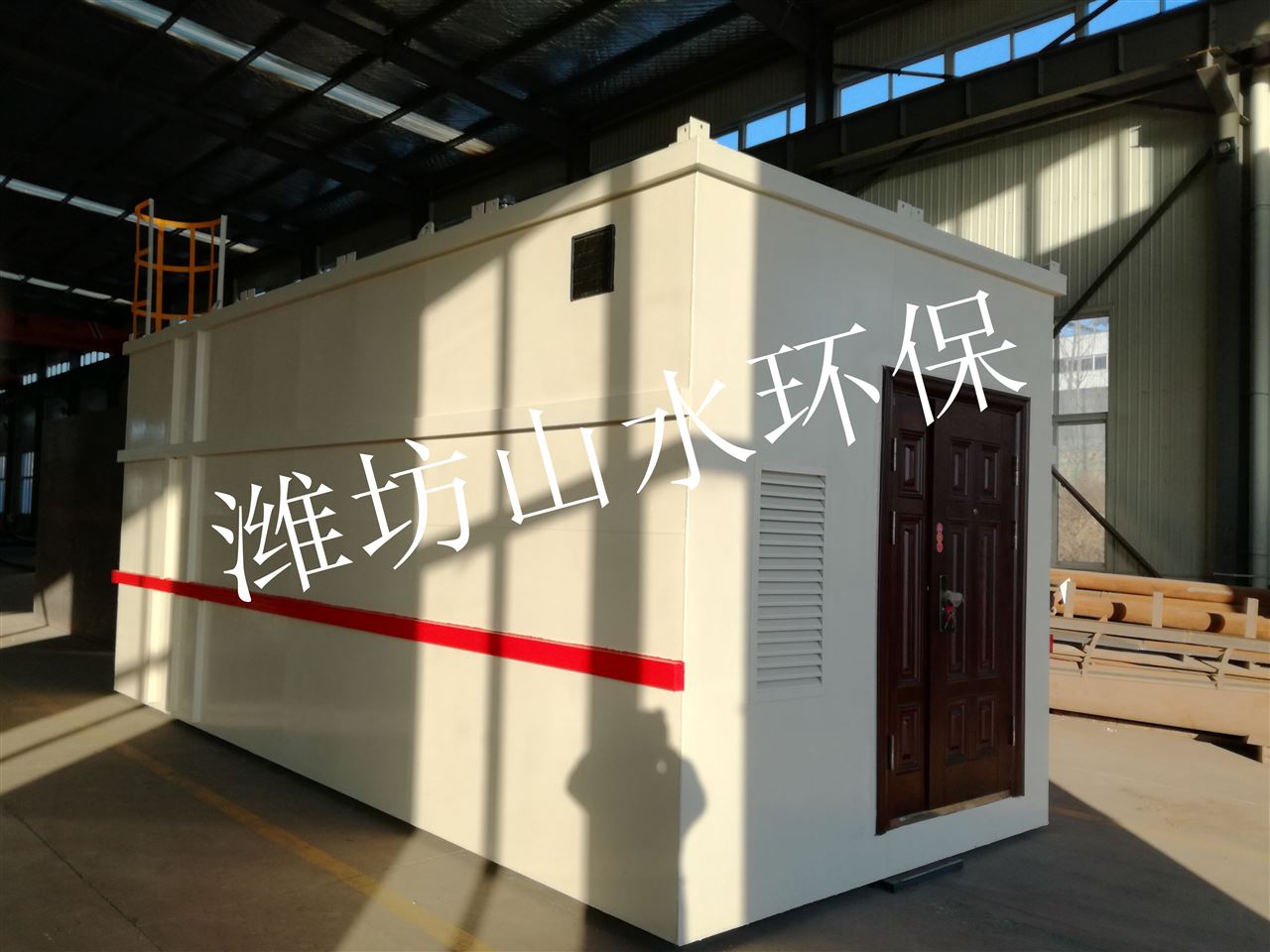Hospital sewage treatment process selection (1) According to the size and nature of the hospital and the treatment of sewage discharge, process selection. According to the hospital classification, it is divided into infectious disease hospitals and general hospitals. After the sewage treatment in the hospital, the discharge is divided into two categories: discharge into natural water bodies and discharge into urban sewage treatment plants through municipal sewers. The process used in hospital sewage treatment must ensure that the treated water reaches the standard. The three main processes used are: primary treatment, secondary treatment and simple biochemical treatment to enhance the treatment effect. The principle of process selection is: 1. Infectious disease hospitals must adopt secondary treatment and need to be pre-sterilized. 2. The county and county hospitals that handle the discharge of effluent into natural water bodies must adopt secondary treatment. 3. The general hospital that handles the discharge of effluent into the urban sewer (the secondary sewage treatment plant is located downstream) is recommended to adopt secondary treatment. The treatment effect must be strengthened for the use of the primary treatment process. 4. For small general hospitals in economically underdeveloped areas, simple biochemical treatment can be used as a transitional treatment when conditions are not available, and then secondary treatment or stepwise treatment of treatment effects can be gradually realized. (II) Application of different treatment processes Considering the above principles, the hospital wastewater treatment process designed by this scheme is compared: With the continuous development of sewage treatment technology, the technologies developed in recent years that are commonly used at home and abroad are: 1. One-stage treatment process to enhance the treatment effect For general hospitals that process effluent and finally enter the secondary treatment urban sewage treatment plant, the treatment effect should be strengthened, the removal rate of SS should be increased, and the amount of disinfectant should be reduced. Strengthening the primary treatment effect should be achieved in two ways: to transform the existing primary treatment process to enhance the removal effect and to adopt the first-level strengthening treatment technology. (1) Process flow For the general hospital (without infectious wards) sewage treatment can be used "pretreatment → first-stage intensive treatment → disinfection" process. The coagulation sedimentation (filtration) removes particles carrying viruses and germs, improves the disinfection effect and reduces the amount of disinfectant, thereby avoiding the adverse effects of excessive disinfectant dosage on the environment. First-level intensive treatment process (omitted) The hospital sewage enters the regulation tank through the septic tank, and the automatic grille is arranged at the front of the adjustment tank, and the lift pump is arranged in the adjustment tank. After the sewage is lifted, it enters the coagulation sedimentation tank for coagulation and sedimentation. The effluent from the sedimentation tank enters the contact pool for disinfection, and the effluent from the contact pool reaches the standard discharge. The garbage generated in the sewage treatment station such as the adjustment tank, the coagulation sedimentation tank, the sludge in the contact pool and the grid residue is concentrated and disinfected. Disinfection can be carried out by pasteurization or adding lime. (2) Process characteristics The first-stage strengthening treatment to enhance the treatment effect can improve the treatment effect, remove the particles carrying viruses and germs, improve the effect of subsequent deep disinfection and reduce the amount of disinfectant. The transformation of the existing primary treatment process can make full use of existing facilities and reduce investment costs. (3) Scope of application The first-stage intensive treatment to enhance the treatment effect is suitable for the treatment of effluent and finally into the general hospital of the secondary treatment urban sewage treatment plant. 2, secondary treatment process (1) Process description The secondary treatment process is “regulation tank→biooxidation→contact disinfectionâ€. Hospital sewage enters the conditioning tank through the septic tank. Adjust the front of the pool to set the automatic grille. The lifting water pump is arranged in the regulating tank. After the sewage is lifted, it enters the aerobic tank for biological treatment, and the effluent from the aerobic tank enters the contact pool for disinfection, and the effluent reaches the standard discharge. The garbage generated in the sewage treatment stations such as the regulating tank, the biochemical treatment tank, the sludge in the contact pool and the grid residue are concentrated and disinfected and transported. Disinfection can be carried out by pasteurization or adding lime. Secondary treatment process (non-infectious diseases and infectious disease sewage) (omitted) Sewage and manure from infectious disease hospitals are collected separately. The domestic sewage directly enters the pre-sterilization tank for disinfection treatment and then enters the regulation tank. The patient's feces should be disinfected independently, then enter the septic tank through the sewer or be treated separately (as indicated by the dotted line). Each structure shall be operated in a closed environment, and the air shall be ventilated through a unified ventilation system. The exhaust gas shall be discharged after disinfection, and the ultraviolet disinfection system may be used for disinfection. (2) Process characteristics The aerobic biochemical treatment unit removes organic pollutants such as CODcr and BOD5, and the aerobic biochemical treatment can select contact oxidation, activated sludge and high-efficiency aerobic treatment processes, such as membrane bioreactor and biological aerated filter. The high-efficiency aerobic treatment process with filtration function can reduce the concentration of suspended solids and facilitate subsequent disinfection. (3) Scope of application Applicable to infectious disease hospitals (including general hospitals with infectious wards) and general hospital sewage discharged into natural water bodies. Shanshui people will take the products of excellent quality and excellent service as the unremitting pursuit of the enterprise, and will always be the vanguard on the road of environmental protection. Do your part for the benefit of a cloud, blue sky, green and environmentally friendly society! Face Mask,3 Layer Dust Mask,Face Mask Medical,Eco-Friendly Face Mask KUTA TECHNOLOGY INDUSTRY CO.,LIMITED , https://www.kutasureblue.com